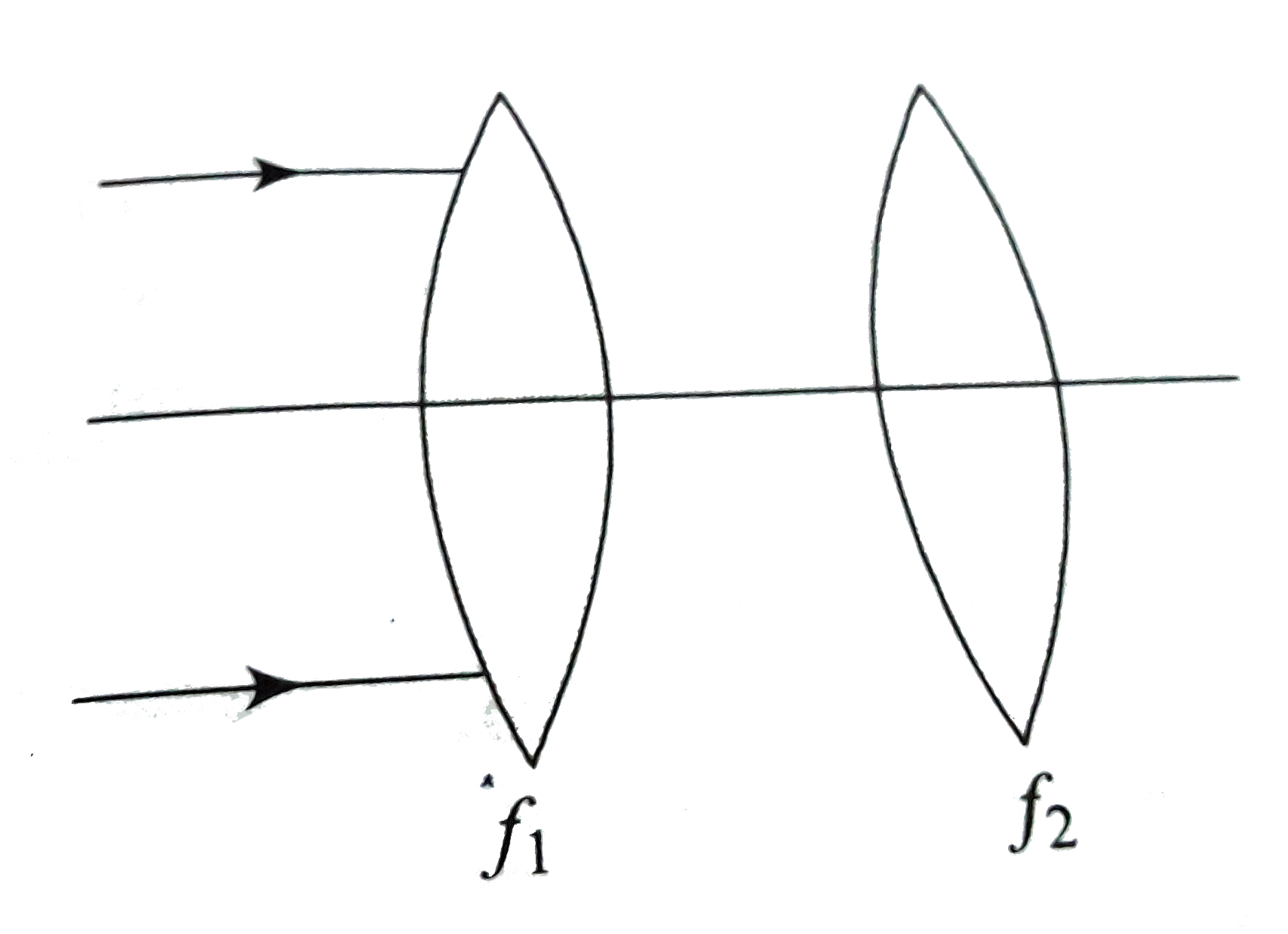Two convex lenses of focal lengths 0.3m and 0.05m are used to make a telescope. The distance kept between the two is
0.35 m
0.25 m
0.175 m
0.15 m
The correct Answer is:A
To solve the problem of finding the distance between two convex lenses used to make a telescope, we can follow these steps:
1. Identify the Focal Lengths:
- The focal length of the objective lens (f₁) is given as 0.3m.
- The focal length of the eyepiece lens (f₂) is given as 0.05m.
2. Understand the Configuration of the Telescope:
- In a telescope, the distance between the two lenses is equal to the sum of their focal lengths. This is because the focal points of the two lenses must coincide for the telescope to function properly.
3. Calculate the Distance Between the Lenses:
- The distance (D) between the two lenses can be calculated using the formula:
D=f₁+f₂
- Substituting the values:
D=0.3m+0.05m
- Performing the addition:
D=0.35m
4. Final Answer:
- The distance kept between the two lenses is 0.35m.
- The focal length of the objective lens (f₁) is given as 0.3m.
- The focal length of the eyepiece lens (f₂) is given as 0.05m.
- In a telescope, the distance between the two lenses is equal to the sum of their focal lengths. This is because the focal points of the two lenses must coincide for the telescope to function properly.
- The distance (D) between the two lenses can be calculated using the formula:
D=f₁+f₂
- Substituting the values:
D=0.3m+0.05m
- Performing the addition:
D=0.35m
- The distance kept between the two lenses is 0.35m.
Similar Questions
A parallel beam of light is incident on the system of two convex lenses of focal length f1=20cm and f2=10cm . What should be the distance between the two lenses so that rays after refraction from both the lenses pass undeviated?

View SolutionTwo plano-convex lenses of focal lengths 20cm and 30cm are placed together to form a double convex lens. The final focal length will be
View Solution
Knowledge Check
Two identical glass (μg=3/2) equiconvex lenses of focal length f are kept in contact. The space between the two lenses is filled with water (μw=4/3) . The focal length of the combination is
AfBf2C4f3D3f4
A convex lens of focal length f is placed somewhere in between an object and a screen. The distance between the object and the screen is x. If the numerical value of the magnification produced by the lens is m, then the focal lnegth oof the lens is .
View SolutionA microscope consisting of two convex lenses of focal lengths 2 cm and 5 cm placed 20 cm apart. Where must the object be placed so that the final image (virtual) is at a distance of 25 cm from eye ?
View SolutionTwo identical glass (μg=3/2) equi- convex lenses of focal length f each are kept in contact. The space between the two lenses aiisolfilled with water (μg=4/3). The focal length of the combination is
View SolutionTwo identical glass (μg=3/2) equi- convex lenses of focal length f each are kept in contact. The space between the two lenses is also filled with water (μg=4/3). The focal length of the combination is
View SolutionAn object is placed midway between a concave mirror of focal length f and a convex mirror of focal length f. The distance between the two mirrors is 6f. Trace the ray that is first incident on the concave mirror and then the convex mirror.
View SolutionTwo convex lenses of focal length 10cm and 20cm respectively placed coaxially and are separated by some distance d. The whole system behaves like a concave lens. One of the possible value of d is
View SolutionAn astronomical telescope consists of two thin convex lenses having focal lengths of 140 cm and 5 cm. The telescope is adjusted to be in normal adjustment.
What is the angular magnification, i.e.. magnifying power of the telescope in this set up?
(ii) What is the distance between the two lenses equal to ?
View Solution
